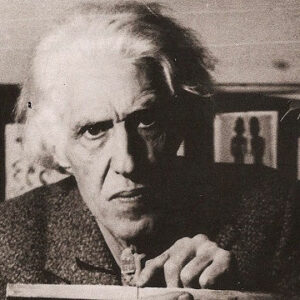Joaquin Torres Garcia was a renowned Uruguayan artist whose effect on Latin American Constructivism is widely recognized. Through his artwork, publishing, and teaching, he is credited with introducing Constructivism to South America. Throughout his career, he wrote more than 36 works devoted to theoretical analyses of various art trends, painted thirteen murals, and taught future generations of artists. He traveled for the majority of his 75 years, spending 40 of them in Europe and the United States. He battled with finances throughout his whole life, resulting in many relocations, until he ultimately returned to his hometown to teach everything he had learnt. He established his own workshop in order to propagate his message. He introduced Cubism, Neoplasticism, and Constructivism to Uruguay through his journal ‘Circles and Squares’ as the father of Latin American Constructivism. During his lifetime, he showed among such renowned artists as Picasso, van Doesburg, Mondrian, and Duchamp. In Europe, this inventive artist is regarded as a master, but in North America, he is not as well-known for his outstanding achievements. This successful teacher, painter, and author’s unwavering passion for art has inspired the next generation of artists.
Youth and Early Life
On July 28, 1874, he was born in Montevideo, Uruguay. His mother was Uruguayan and his father was a Catalan immigrant who had a general store.
Due to financial difficulties, the family chose in 1891 to relocate to Barcelona, Spain, the birthplace of his father.
Here, Joaquin Torres Garcia indulged his artistic desires by studying painting with Josep Vinardell.
In 1892, he studied painting at the Academy of Fine Arts in Barcelona. Shortly thereafter, the young guy opted to transfer to the more prestigious Baixas Academy.
He attended the Cercle Artistic de Sant Lluc from 1893 to 1898. He began illustrating journals and books, including Barcelona Comica and Jacinto Benvante’s La Vida Literaria, when he was a student here.
Joaquin Garcia’s Career
In 1901, Joaquin Torres Garcia began to paint frescoes. Early in his career, he adopted the style of the French artist Pierre Puvis de Chavannes.
In 1903, he collaborated with Catalan architect Antoni Gaudi on stained glass for Barcelona’s “Sagrada Familia” Cathedral. In the same year, he began publishing articles on Noucentisme.
Notes on Art, his first book, was completed and published in 1913. In the same year, he founded the Sarria School of Decorative Arts.
In 1918, as a lengthy endeavor neared completion, the government decided to discontinue the undertaking. He then shifted his attention to developing wooden toys. A decade-long hush in which he did not participate in theoretical conversations ensued.
Between 1920 and 1922, Joaquin Torres Garcia moved to New York, where he painted a variety of portraits, including one of Joseph Stella. Both the Society of Independent Artists and The Whitney Studio Club exhibited his work. He painted the backdrops for “The Great Play.”
In 1922, he began producing and selling wooden toys. They were intended to be teaching aids, but instead, they became renowned works of art that he continued to create after relocating to the United States.
Together with Piet Mondrain and Michel Seuphor, he founded the periodical Circle and Square in 1930. Their primary objective was to offer an alternative to the prevailing Surrealist movement of the moment. He published numerous works and staged numerous shows.
In 1934, Joaquin Torres Garcia returned to Montevideo, his hometown. In Montevideo, he formed the Association for Constructivist Art. He focused on emphasizing the significance of modern art schools. In Uruguay, he relaunched the magazine Circle and Square the same year.
In 1943, he developed the “Taller Torres-Garcia,” a Constructivist school. This institution influenced the subsequent generation of artists around the world.
At the Hospital Saint Bois, he painted seven mural frescoes in 1944. In the same year, he published his most well-known work, ‘Universalismo Constructivo,’ as well as several others, such as ‘en defense de las expresiones modernas del arte’ and ‘con respecto an una futura creacion literaria y dos poemas.
Joaquin’s Major Opera
In 1944, Joaquin Torres Garcia wrote ‘Universalismo Constructive,’ his most influential theoretical book. The work incorporated Renaissance style, European formalism, and the mysticism of primordial art. They viewed his movement as a “religious conviction” in which Garcia was God because he garnered such a significant following among the younger generation of students.
Awards & Achievements
In 1934, he was appointed honorary professor at the Montevideo Faculty of Architecture. He formed the Uruguay Society of the Arts in the same year. His accomplishments led to his admittance into the creative elite of Europe.
Personal History and Legacy
He married Manolita Pia in 1909. They eventually have four children together.
He passed away on August 8, 1949, in Montevideo, Uruguay, at the age of 75.
He is considered the originator of the modern painting movement known as Constructivism Universalist. This style is symbolic and abstract, combining numerous art styles to create groundbreaking masterpieces.
Estimated Net Worth
Joaquin is one of the wealthiest and most well-known historians. According to our research, Wikipedia, Forbes, and Business Insider, Joaquin Torres Garcia has an estimated net worth of $1.5 million.
Trivia
Between 1922 and 1924, Spain outlawed the Catalan language, leading to the prohibition of Garcia’s works. Simultaneously with the death of his mother, he was compelled to leave his gratifying life in Paris due to a personal financial issue.


